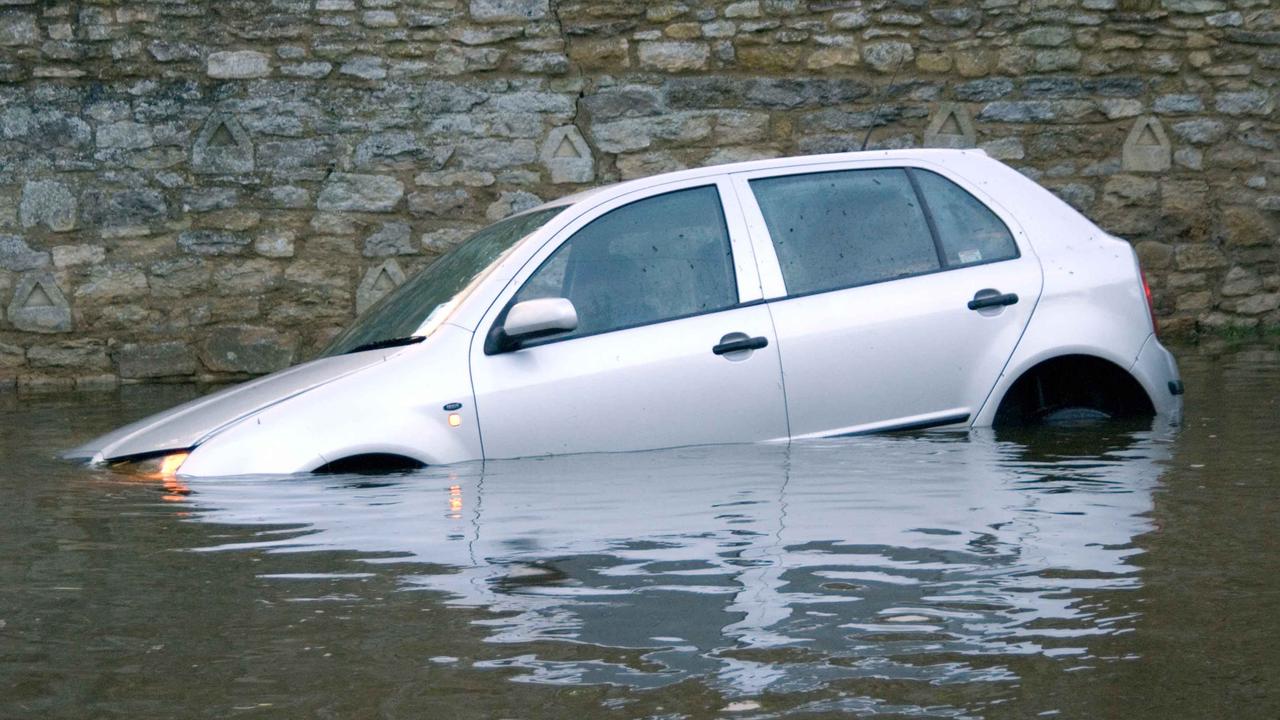Driven through a large body of water? You may have done some expensive damage to your car
We’ve all done it. There’s a flooded patch of road up ahead and you’ll think “it doesn’t look that deep, maybe I’ll risk it”.
Well, if your risk backfires, your car could come to a spluttering halt halfway through the water. If the shame of passers-by instantly putting you on social media isn’t bad enough, you might also be hit with a pretty nasty garage bill.
Flooding can cause damage to your engine and all the various electrics that are needed to power the car’s functions. And you might even need to pay a rescue service or a local farmer to tow you out of the water.
Can flood water damage your car?
Yes, flood water can do extensive damage to a car – some of which might be immediately obvious, some of which might not. If your car does splutter to a stop, you can probably guarantee some engine damage as water has got where air, fuel or oil normally goes.
Even if you get through the water seemingly scot-free, you might notice some new electrical gremlins if water has made it to your car’s wiring.
If you can help it, you shouldn’t even drive through a large puddle. Water can get into small crevices and vents and, if it doesn’t trickle out, could cause rust patches or interior leaks further down the line.
What does flood damage do to a car?
Just a foot or two of flood water could potentially lift a car, and fast flowing water could sweep you and your car away. Then, you’re at the peril of the water and your car could get all sorts of damage to the bodywork, engine and electricals.
If your car has sat in floodwater for any period of time, it could also be damaged without you realising. Even with the engine off, any water that has got in through vents or exhaust could cause expensive or potentially irreparable damage.
For example, if water gets inside the engine block, there’s not enough room for fuel to enter the combustion chamber and the pistons will get damaged as they can’t compress the water. Any water in the engine can cause engine failure in one way or another.
How to spot a flood damaged car

Flood damage is very hard to fully conceal, and here are some telltale signs that a car has been flooded – either recently or in the past:
- A damp smell – this should be a red flag regardless of whether the car has been flood damaged, as odours linger and can point to either flood damage or broken seals
- Damp patches – similarly, car interior materials can hold on to water and be hard to fully dry out. Check the footwells and boot carpets, and the spare wheel well if there is one
- Check the engine bay – if there’s a considerable amount of silt, dirt or mud it could mean that the car has been flooded. If there’s a clear tide mark, walk away – the vehicle probably has been submerged in flood water for a period of time
- Look for rust spots – water causes metal to rust so, if the car looks worse than you’d expect for its age and mileage, it could point to previous flood damage. Make sure to check around and inside the wheel arches, and under the side sills
- Check all the electrics work – lights, ancillaries and everything else
Does car insurance cover flood damage?
It might. Car insurance companies generally categorise flooding as avoidable or unavoidable.
- Avoidable – this means that your actions have put the car at greater risk of flood damage. Maybe you’ve driven through deep flood water or you’ve parked your car in an area that regularly floods
- Unavoidable – when you have little control over your car being flooded or you’ve taken necessary precautions to try and avoid it. For example, if your car floods while parked on your driveway
Insurance companies probably won’t pay out if they deem the damage to have been avoidable. If it’s deemed unavoidable, you’re more likely to receive a pay out. It’s worth noting that only comprehensive insurance policies cover flood damage – third-party and third-party, fire & theft cover generally won’t cover flooding.
Whether the vehicle will be written off comes down to how much damage it’s sustained, how expensive the repair costs will be and how much the car is worth in the eyes of the insurance company. Check if your personal possessions in the car are covered, either on your car insurance or contents insurance.
Don’t try and dry the car out yourself, as your insurance company will want proof that it’s been done properly by a professional.
What to do after driving through flood water
If you’ve made it through flood water, make sure to check your brakes. Pressing the pedal briefly can help dry them off and let you know they’re still working. At the earliest opportunity, give your car a thorough check for signs of damp or water ingress, and check that the car is driving normally and that all your electrical functions are working as they should.
What if you’ve not been so lucky and your car has cut out? Don’t be tempted to open the bonnet or try to restart the car, as both of these can cause additional damage to the engine and electrics. Put your hazard lights on, call your breakdown service and wait to be rescued.
Then, contact your insurer and be truthful about the circumstances and the extent of the flooding. Most likely, they’ll arrange to have a mechanic come and assess how much damage has been caused, which influences the insurer’s decision on whether to write the car off or not.



































